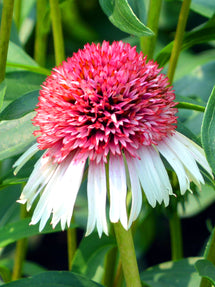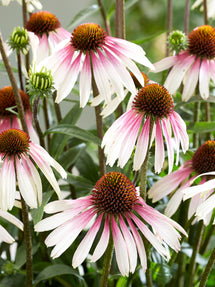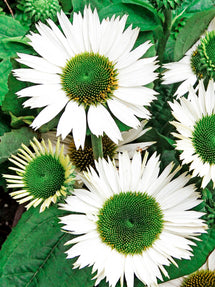Echinacea (Coneflower)
Echinacea, also known as coneflower, is a genus of flowering plants in the daisy family (Asteraceae). It is native to North America and widely cultivated for its striking, daisy-like flowers that are often used in gardens, wildflower meadows, and as cut flowers.
Showing 1 - 3 in 3 items
Echinacea (Coneflower)
Echinacea, also known as coneflower, is a genus of flowering plants in the daisy family (Asteraceae). It is native to North America and widely cultivated for its striking, daisy-like flowers that are often used in gardens, wildflower meadows, and as cut flowers.
There are nine species of Echinacea, but the most commonly cultivated species for ornamental purposes are Echinacea purpurea, Echinacea angustifolia, and Echinacea pallida. The plants have stout stems and large, spiny, cone-shaped centers surrounded by ray flowers in shades of pink, purple, orange, and yellow. Flowers typically bloom in the summer and attract a variety of pollinators, including bees and butterflies.
In addition to their ornamental value, Echinacea has been used for centuries in traditional medicine for its alleged health benefits, such as boosting the immune system and treating colds, flu, and other infections. However, scientific evidence for these health claims is limited and more research is needed to fully understand the effects of Echinacea on human health.
Echinacea is relatively easy to grow and is tolerant of a wide range of growing conditions, including drought and poor soils. It is recommended to plant Echinacea in full sun and well-draining soil, and to leave the dried flower heads on the plant to provide food for birds in the winter.
Echinacea is a versatile and beautiful genus of plants that is both attractive to pollinators and has a long history of use in traditional medicine. Whether grown for ornamental or medicinal purposes, Echinacea is a valuable addition to any garden. It's also very suitable as a cut flower.



